Half-orcs
Kin to rage and sorrow
It has been ages since the orcs had spilt out into the world. Nobody knows where they came from, yet the violent race seemed bent on chaos and destruction. After the initial rampage, the orcs mostly segregated into disparate tribes and chiefdoms, only occasionally rising to sweeping aggression, but even then not nearly at the level of destruction as in those early years. They often came to neighbour human tribes and frontier settlements, and from their clashes and interactions sometimes came about a new sort of offspring – the half-orcs.
More often than not, half-orcs are children born of violence and misfortune, and as such are considered outcasts unless they’re able to prove their strength. They are viewed with shame by humans, and as runts by orcs, which often makes these headstrong mongrels seek to prove their worth. The combination exhibits more intelligence than an orc and greater strength than a human, often making them uniquely equipped to take over a tribe… that is, if they manage to be cunning and ruthless enough to survive through childhood.
On the other end of the spectrum, some half-orcs are products of marriage pacts or genuine intertribal mixing. Those born in these unions don’t necessarily have better childhoods but are often much better socially adjusted. Many of them manage to reach adulthood, have better opportunities in their communities, and even travel and learn more about the world.
Taller and broader than humans, with singular cunning and tenacious ferocity, half-orcs grow to posses formidable personalities if properly nurtured or through enough life experience. Their propensity for violence can be honed into a brutal edge, though they exhibit a broader scope of interests and capabilities than their orcish progenitors. Often direct and blunt when speaking, they’re not ones to mince words. However, if one befriends a half-orc, they soon find a fast, honourable friend, grateful for the opportunity and the second glance they were afforded.
Basic Information
Anatomy
Half-orcs inherit much of their brawn from their orcish parents. Their shoulders are wide and hulking, their necks are thick and chests puffed up and broad. Their human blood allows their forms to flow better overall, smoothing out many of the ponderous features they'd otherwise possess. Their bones are thicker and denser than humans', and they can build up muscle easier, with cords often showing through the skin - though their metabolisms can lean to obesity easier than a human from overeating or sloth.
Genetics and Reproduction
Like many mongrel races, half-orcs are in most cases unable to reproduce. It is believed that around 1 in 6 half-orcs is not sterile and therefore able to produce offspring with orcs or humans.
Growth Rate & Stages
Half-orcs mature faster than both human and orc children. They enter physical puberty as early as 7, and reach full adulthood at 15, though there's evidence of earlier ages than that.
Additional Information
Facial characteristics
Much of half-orc's facial features owe to their orcish ancestry. Low sloping forehead, sharp angular cheekbones, wide and prominent jaw, all bear witness to that part of their heritage. Their noses vary between orcish snout-like and pronounced human shapes, depending on the individual. Their ears are almost always thick, cauliflower, and pointed at the tips.
But their most prominent features are two tusks jutting from corners of their lips. They grow from their lower jaw and keep growing, so they have to be filed or cut seasonally. Though considered bone, they technically resemble low-grade ivory rather than regular teeth. Another prominent feature, their eyes are distinctly human-like, reflected in both shape and colour.
Perception and Sensory Capabilities
Half-orcs see well in dark conditions, thanks to their orcish blood. Their eyes can sometimes feel sensitive to bright light, though not nearly to the extent of their orcish counterparts.
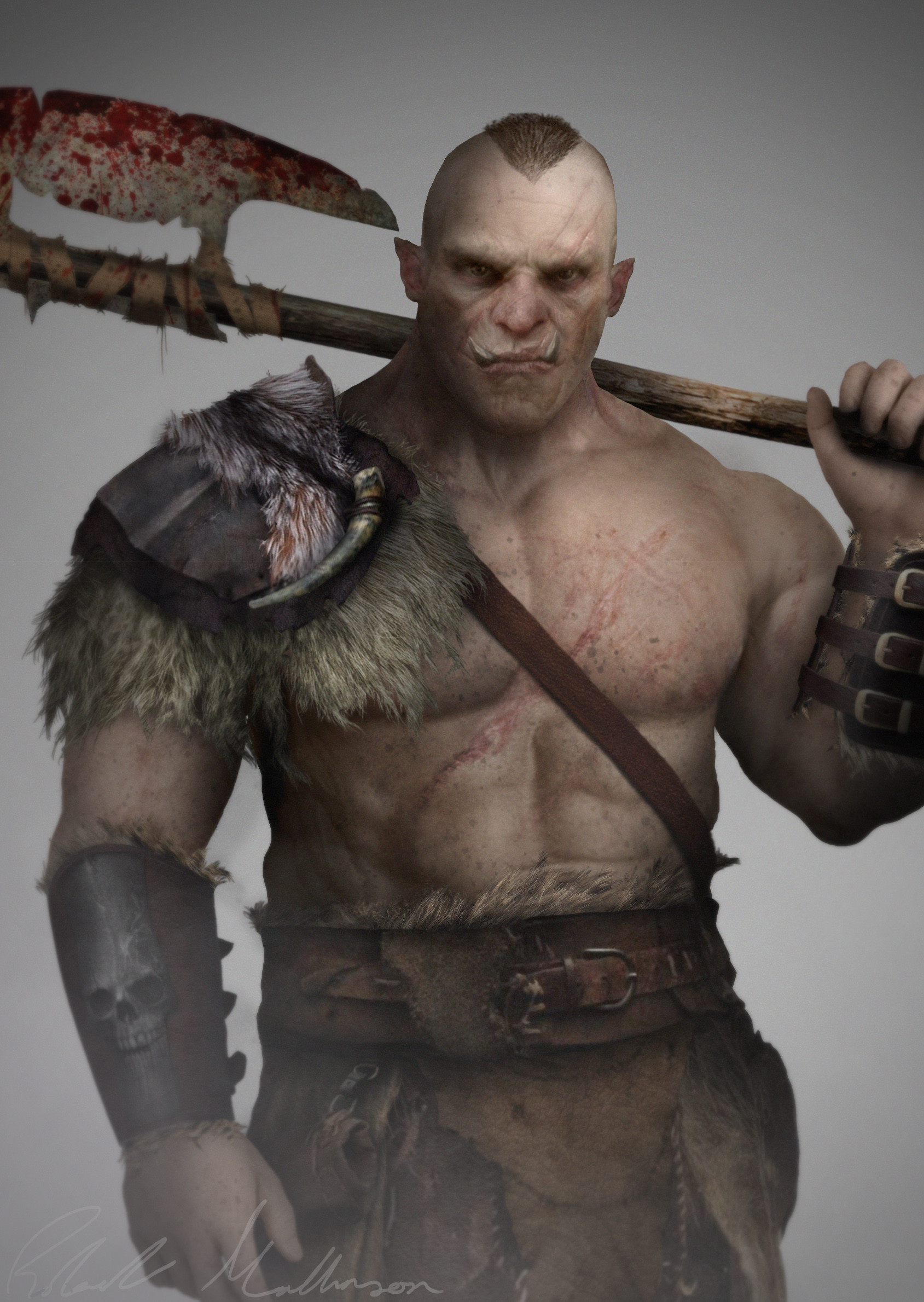
by Robert Mallinson
Lifespan
Half-orcs live slightly longer lives than pure orcs, though shorter than humans. Usually up to 70 years at most.
Average Height
Half-orcs are often taller than humans, ranging in height from 180-235 cm (6'-7'7" ft), with males being visibly taller than females.
Average Weight
Muscular and thick, half-orcs weigh between 110-180 kg (240-400 pounds) on average, with males much heavier than females.
Body Tint, Colouring and Marking
Half-orcs' skin is almost always tinted in some way, leaning towards the ashen and drab colouration of the orcs, in shades of green, brown or grey. They sometimes exhibit gradients or spots of a darker colour than their predominant pigmentation.
Remove these ads. Join the Worldbuilders Guild

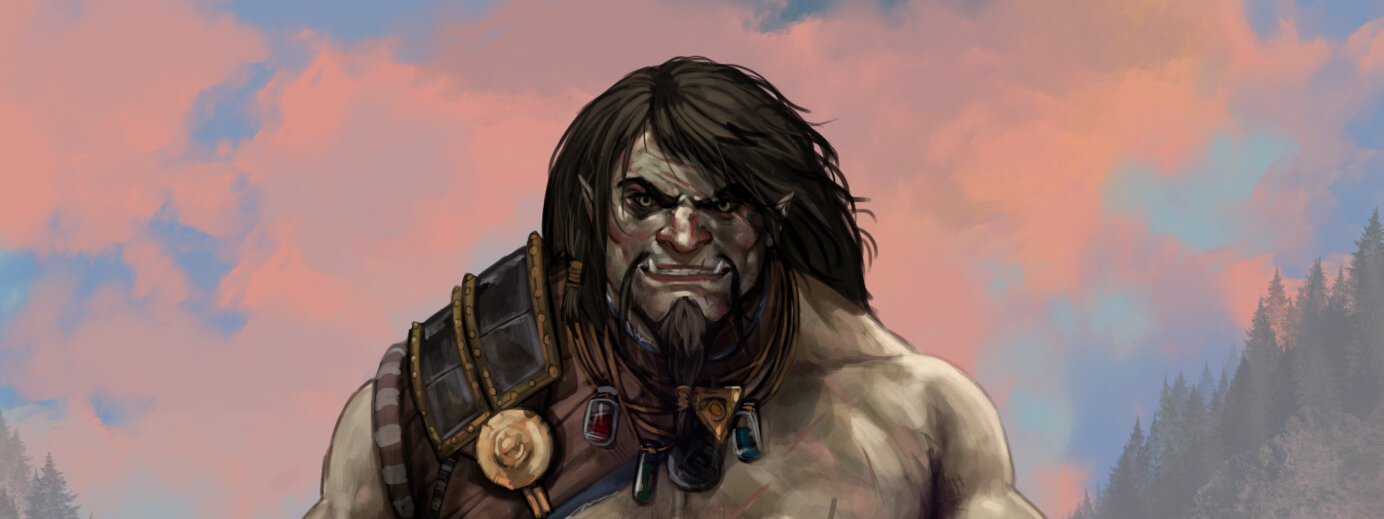
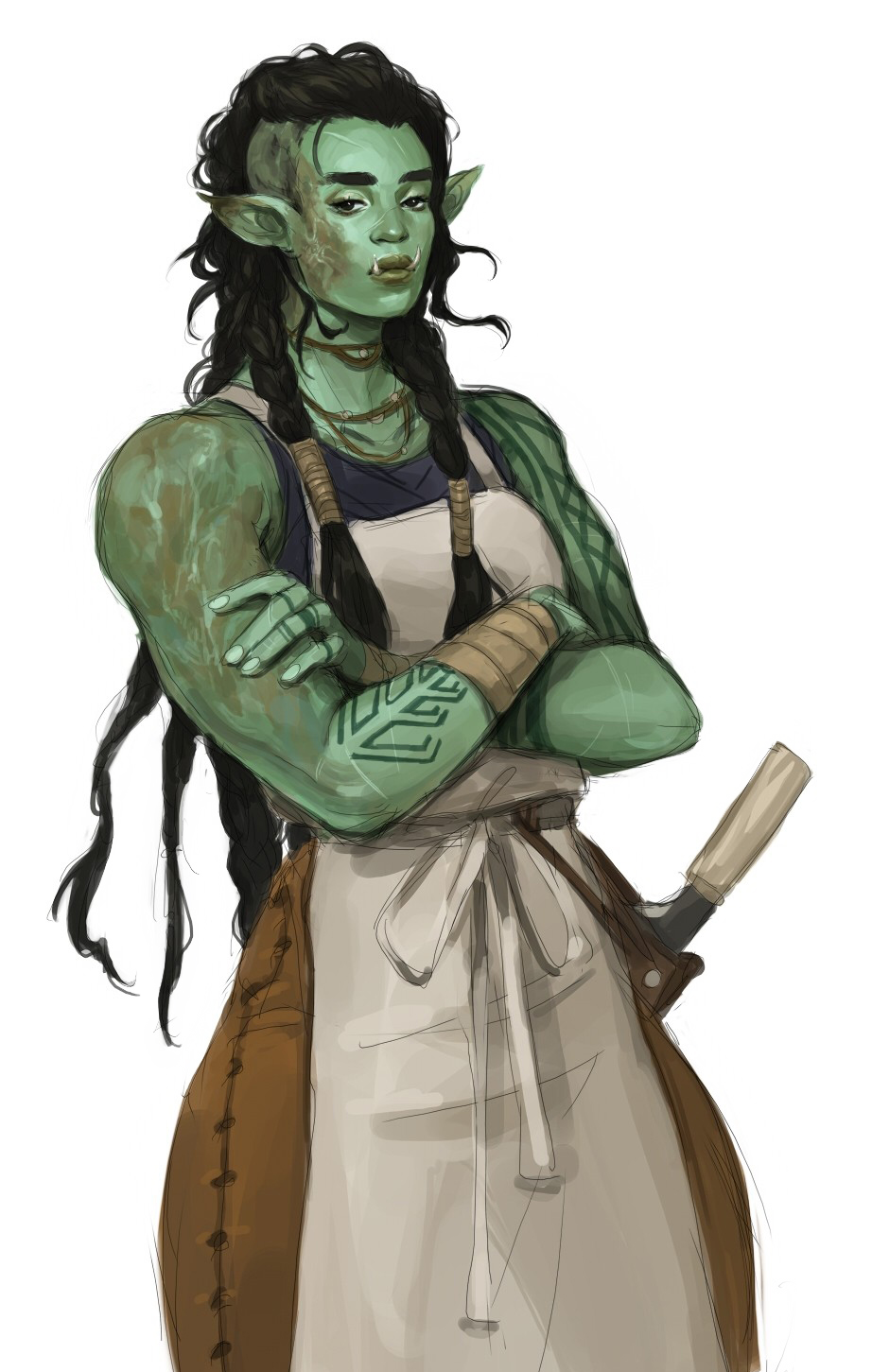



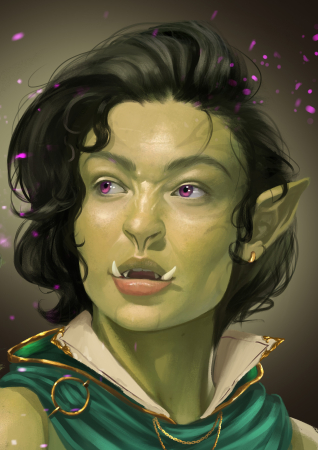

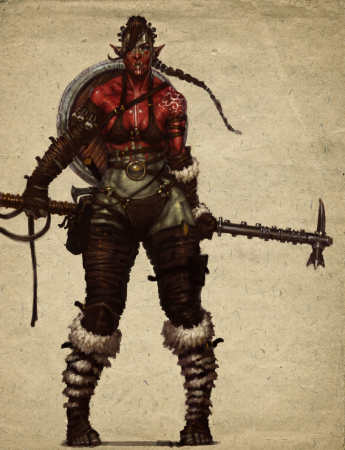
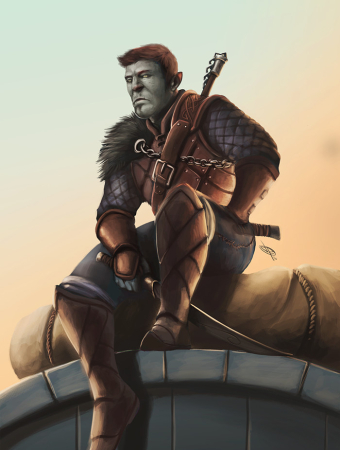










Comments